Dreams Explained: Understanding Their Purpose and Interpretation
Summary:
- Dreams are a series of thoughts, images, feelings, sensations, and scenarios we experience while sleeping.
- Dreaming always accompanies sleep. We go through multiple dream cycles every night, and the content of our dreams varies according to various factors and influences in our lives.
- While dreaming, our brain exhibits unique neurological activity similar to waking consciousness. This activity is now widely accepted to cause dreams.
- As much is still not known about dreams, various dream theories and methods of dream interpretation propose that dreams fulfill specific functions that aid our psychological wellness.
[lwptoc]
To dream is to be human
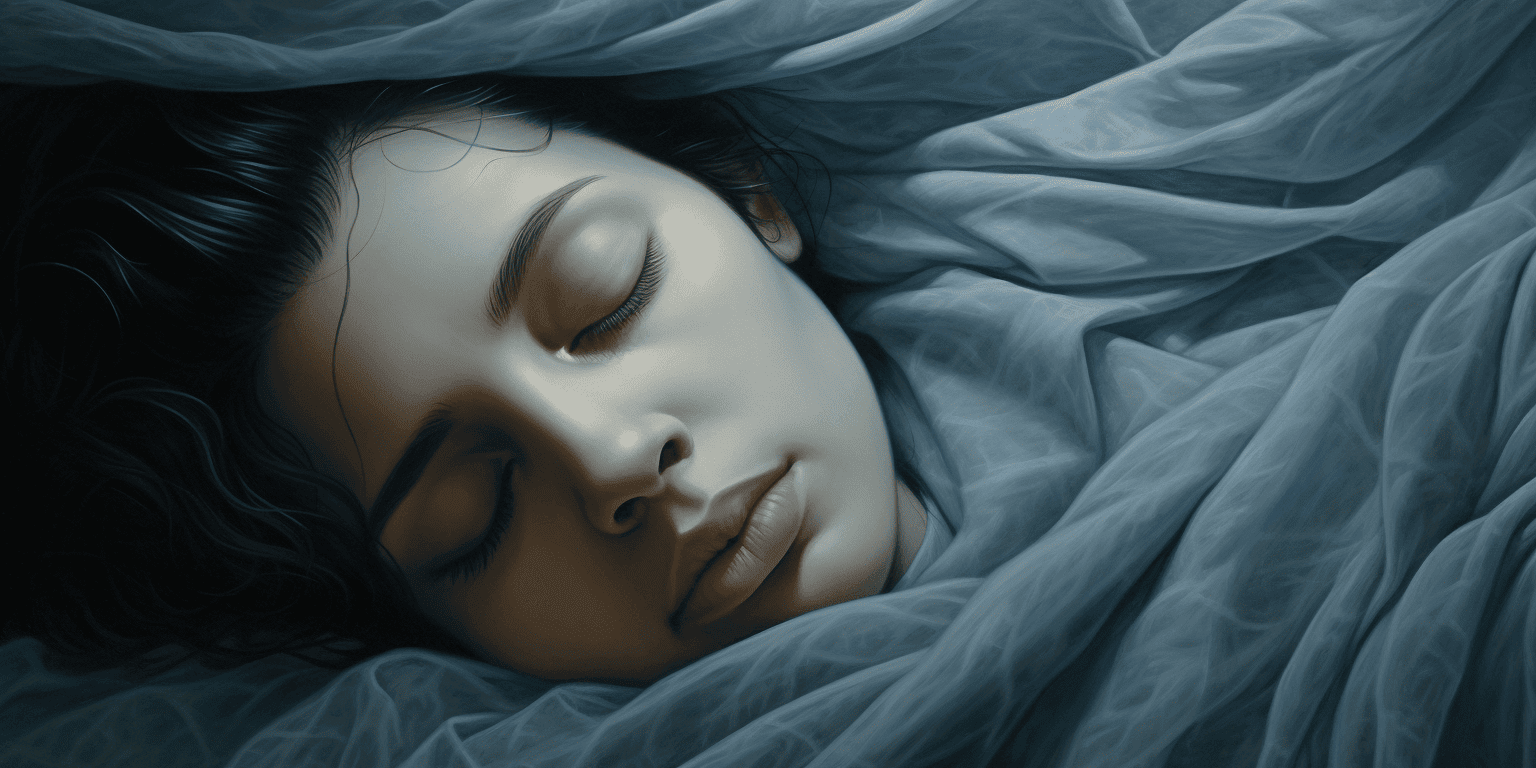
Everyone dreams. Anyone can recount a dream from last night to the earliest memories of their childhood.
While some may claim to have never had a single dream in their life, dreams have been found to occur in all sleeping minds, regardless of whether or not we can recall them.
Dreams are as inseparable from the human experience as sleep, not only because dreams are physiologically natural, but also because dreams have captivated mankind for generations.
Dreams pervade art and media. Many famous writers and painters were inspired by the content of their dreams, and timeless works of religious scripture and world literature reference dreams and dreaming.
From sources of personal insight to a cornerstone in belief systems throughout the world, dreams are truly a universal human experience.
Dreams are a mystery
Apart from their universality, dreams are also known for their enigma, mystique, and cryptic ambiguity. Various cultures, religions, and mythologies have ascribed divine or supernatural causes behind dreams, often infusing them with extraordinary attributes and abilities.
The elusive nature of dreams persists in science, as dreams remain one of the most scientifically puzzling phenomena of the mind.
Although contemporary research has established a concrete link between dreams and neurological activity (thanks to brain imaging technology), the causes and functions of dreams remain an area of divided opinions and theories.
Fortunately, evidence gathered from rigorous studies and brain scans supports most of these perspectives today. For example, sleep scientists widely agree that dreams occur in all stages of sleep, but do so most frequently and vividly in the REM (rapid eye movement) stage of sleep.
While the precise nature of dreams continues to mystify scientists, philosophers, and the average dreamer alike, dream interpretation remains a popular way to extract meaning and insight from dreams.
What are dreams?
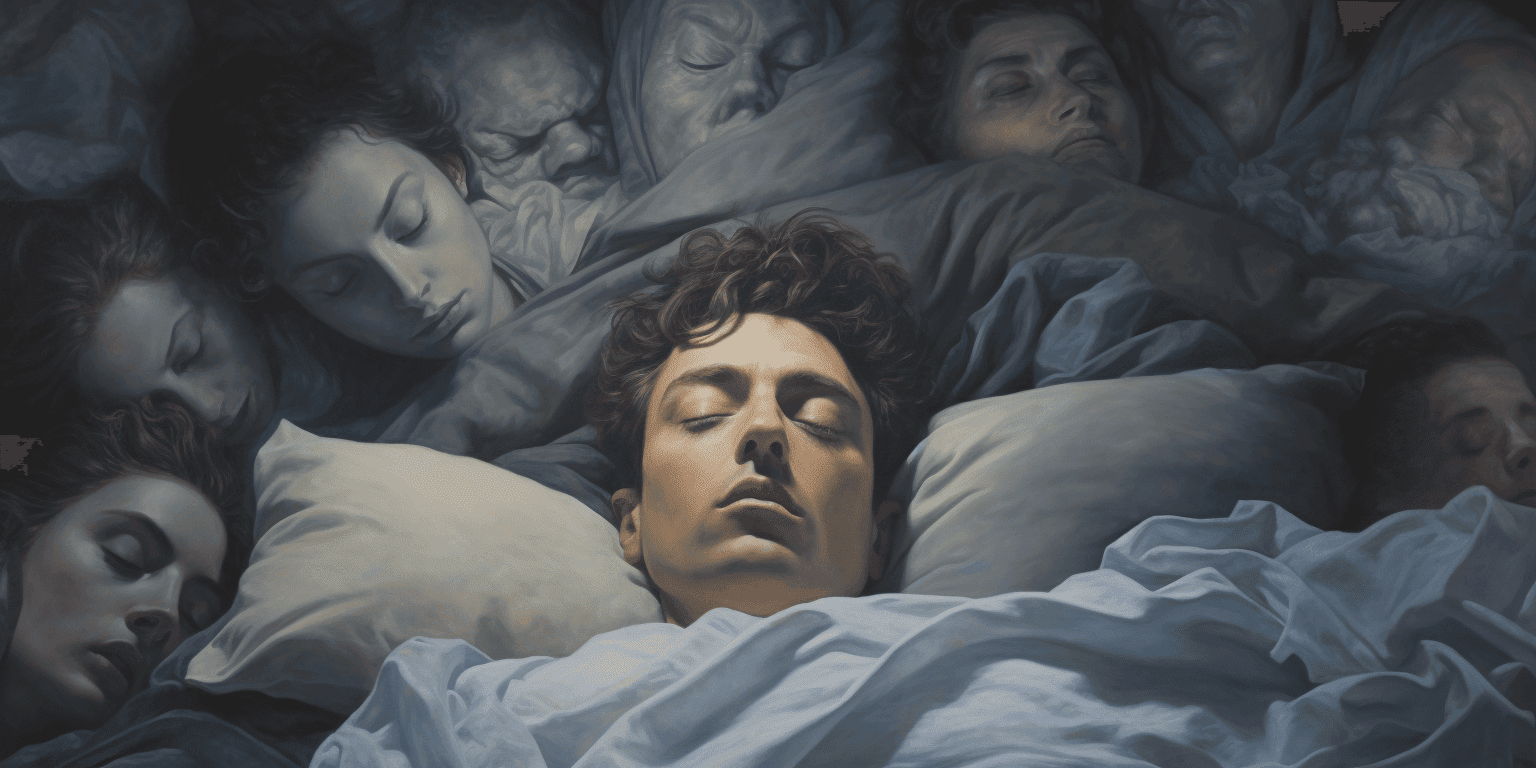
A comprehensive definition of dreams is still a matter of scientific debate. However, most people with an intuitive understanding of dreams would agree with its common dictionary definition: “Dreams are emotions, sensations, and images that we experience while sleeping.”
But this is a broad definition. Science is still trying to understand what dreams are.
While the scientific study of dreams (oneirology) has come a long way from its early beginnings, scientific theories on the causes, function, and meaning of dreams continue to develop and diverge.
Nevertheless, we do know more about dreams than at any other time in history. Thanks to modern technology and contemporary sleep research, we can be sure of some concrete facts about dreams:
- Every person has 4-6 dream cycles every night and spends an average of two hours dreaming.
- Dreams typically last for about 5 to 20 minutes.
- In the average human lifespan, a person dreams for a total time of six years.
- We forget over 90% of our dreams upon waking.
- Even animals, such as dogs and rats, experience dreams.
Sleeping means dreaming
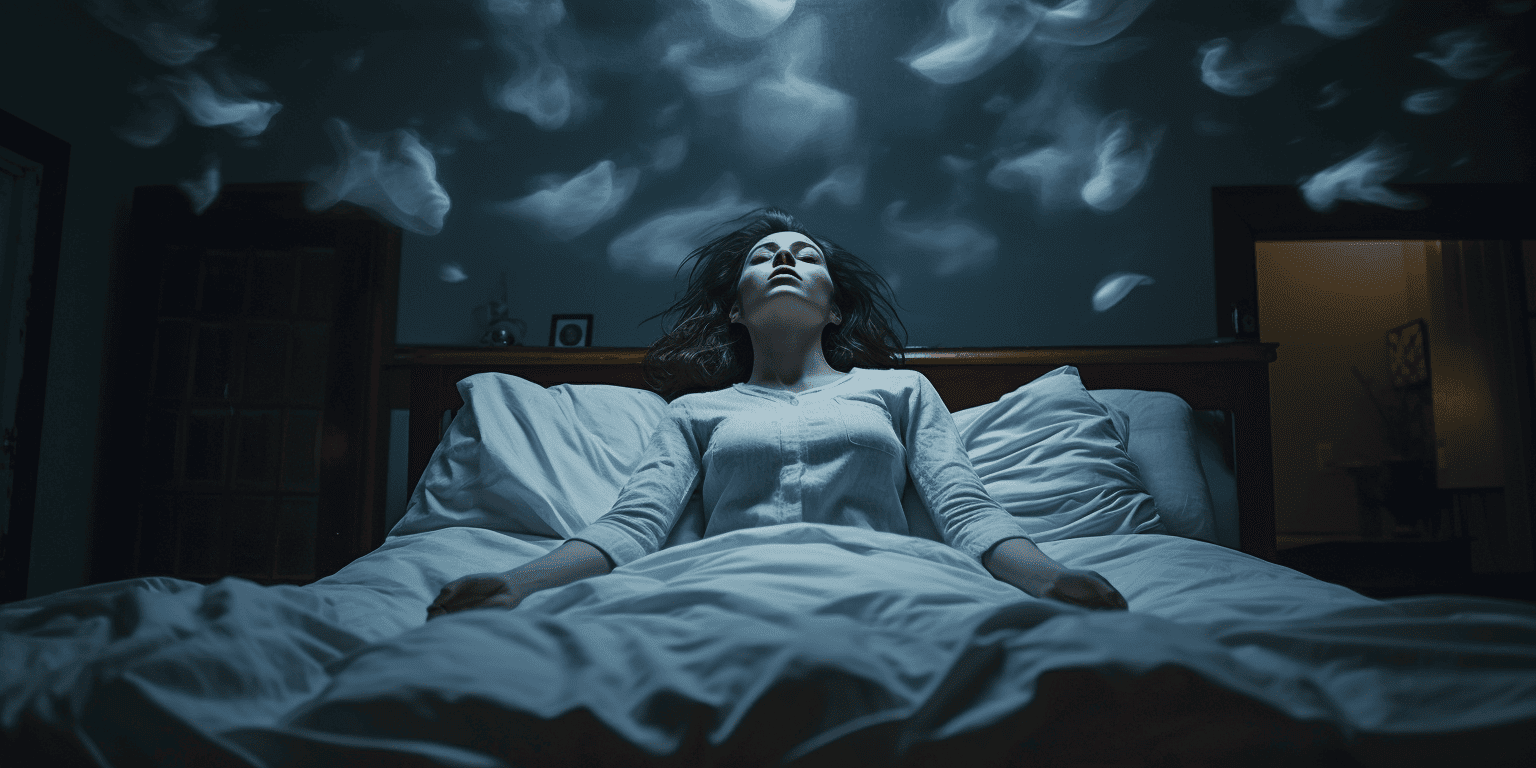
Sleeping always leads to dreams, even if we can’t recount our dreams while awake. This is because of the special nature of brain activity while asleep.
We cycle through the five stages of sleep multiple times every night. Our brains generate dreams in any of these five stages of sleep, but in the stage of REM (rapid eye movement) sleep, dreams have been found to occur most vividly and frequently.
In REM sleep, our eyes move in erratic directions, our breathing changes pace, and our bodies undergo paralysis. Our brains also exhibit activity that’s almost identical to activity during waking consciousness, which has been associated with REM sleep’s positive influence on creativity and learning.
This may explain why, despite being so strange and bizarre, our dreams can often feel so vivid and real. Essentially, we’re in a mental state no different from waking consciousness, and so the mind is likely to treat dreams as reality.
Dreaming is a unique neurological state
Our brains are thereby in a fascinating neurological state while dreaming. Contrary to popular belief, the brain remains active while sleeping and especially while dreaming.
Although the brain continues to be active in its dream state, certain parts of the brain have been found to dial down their activity during REM sleep.
The hippocampus and frontal lobes of the brain, which are the parts responsible for memory storage and logical reasoning, remain working although decrease in activity.
Meanwhile, the activity of the limbic system, which regulates our emotional and behavioral responses heightens. This leads to more potent emotional reactions and experiences in our dreams.
This interplay explains why bizarre and otherworldly scenarios in our dreams feel completely real and logical, and why dreams can often leave us waking with intense feelings.
Dreams are a complex host of cognitive processes
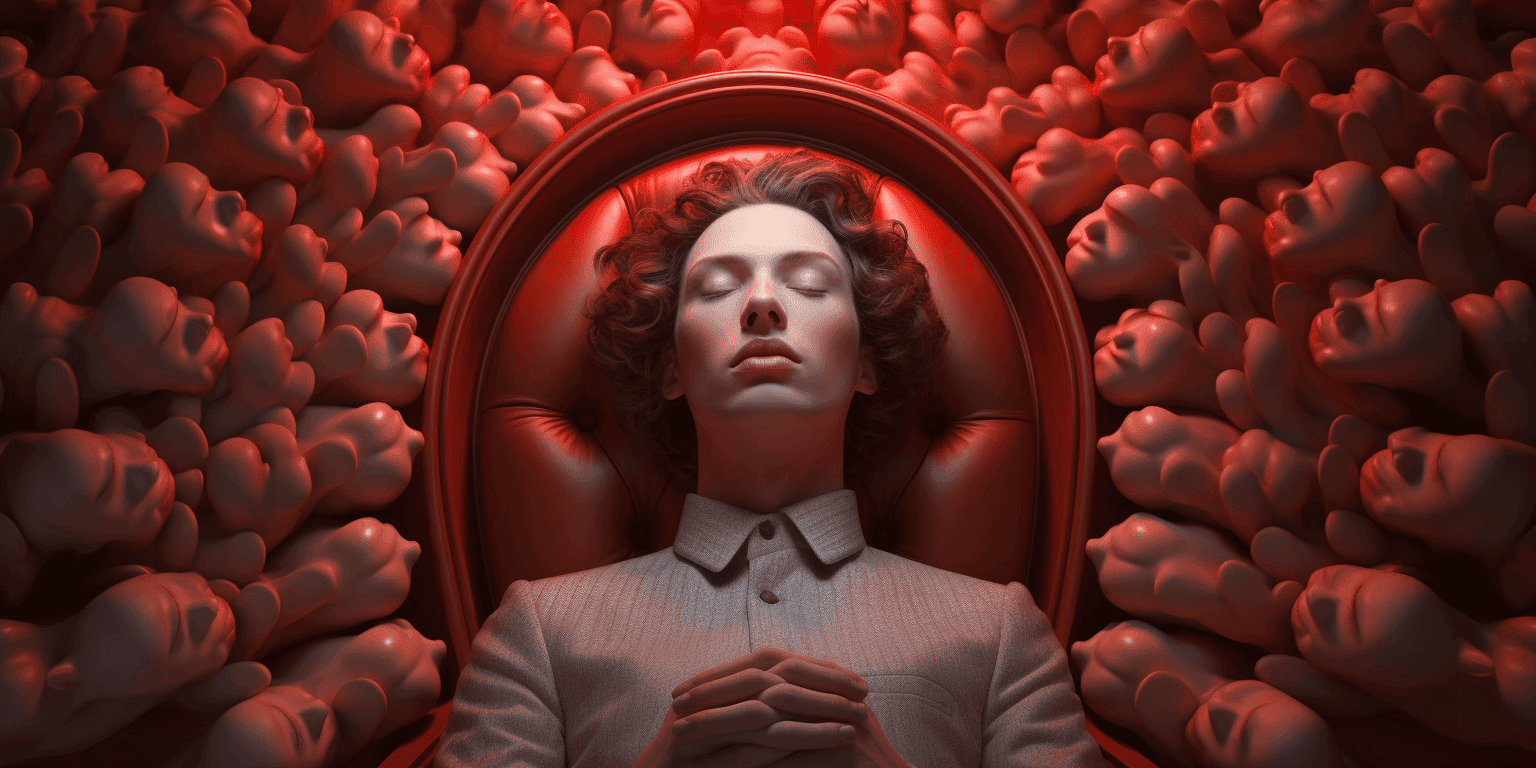
Dreams are many things, but dreams are never simple.
As various parts of the brain remain active while dreaming, cognitive processes involving our senses, emotions, and memories continue to be engaged even while asleep.
These complex processes are foundational to dream experience. They establish why we can “picture” or “hear” our dreams, and why we can sometimes have incredibly vivid dreams that leave us waking with intense emotions.
Sensory Experiences
Dreams can be experienced through sight, hearing, touch, smell, and even taste.
According to one study, visual and auditory stimuli are the most common sensory experiences in dreams, while taste and smell were reported by only one percent of dreamers.
Sensations manifest in dreams despite sensory impairments. Congenitally blind people experience dreams more vividly through other senses such as taste, smell, and touch. Likewise, deaf dreamers report being able to perceive sound in their dreams.
Our body’s sensory inputs also remain active while dreaming. One study found that sensory stimuli on a dreamer’s body while asleep can influence the content of their dreams. Some dreamers also report being able to feel pain while dreaming.
A study on the effects of smell on dreams found that olfactory stimulation can affect dreams. Dreamers who were made to smell roses while asleep had more positive dreams, while the odor of rotten eggs produced more negative dreams.
Emotions
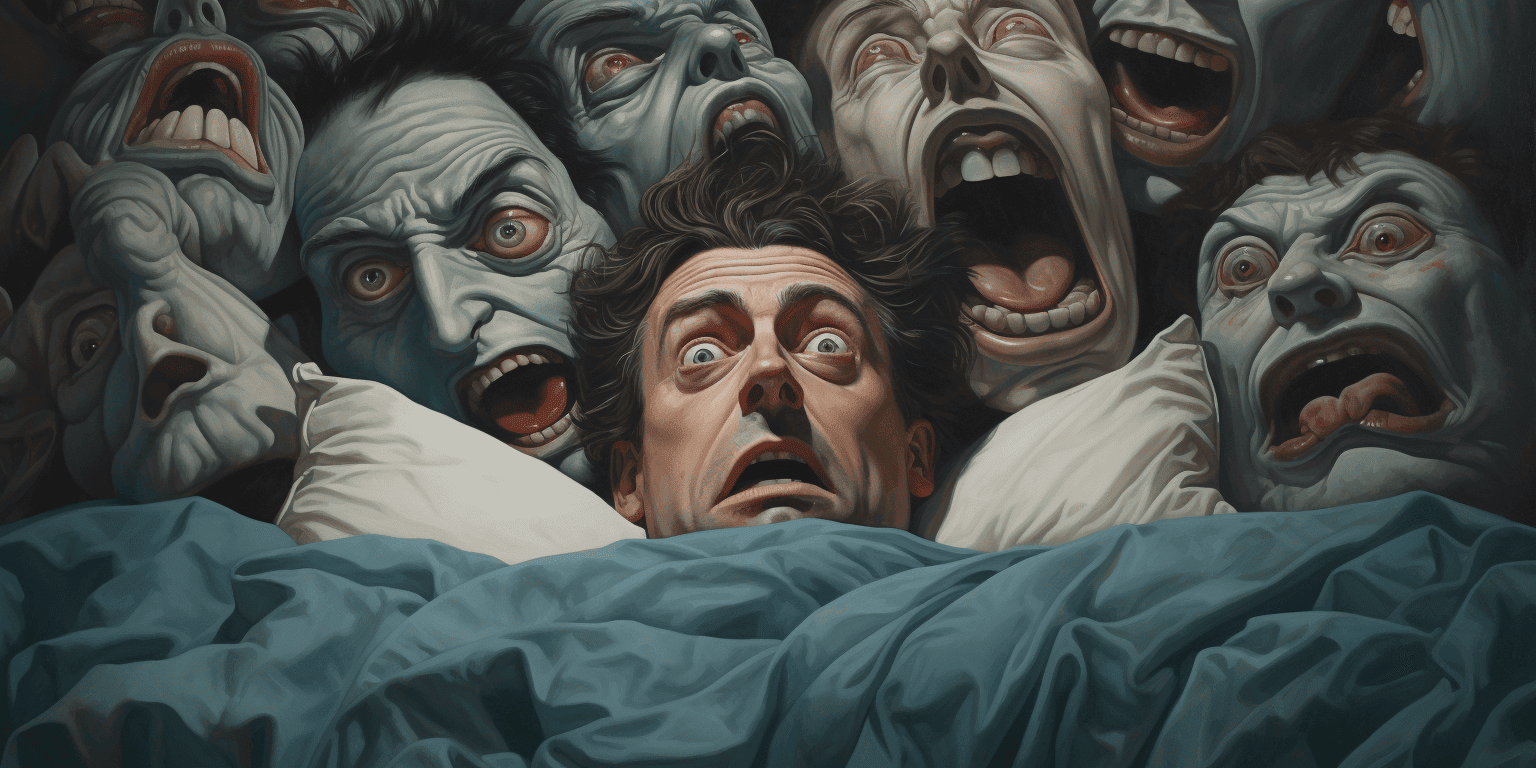
Emotions are integral to dreams. As we dream, parts of the brain responsible for inhibiting our emotions become “muffled”, allowing the brain to become more sensitive to emotional experiences.
Dreams are thereby closely intertwined with our feelings. The emotions we feel while awake can impact our dreams. Dreams, in turn, can also affect our daytime mood.
Recent dream research suggests that dreaming contributes to regulating and processing our emotions. Sleeping and dreaming can even help us cope with stress accumulated throughout the day.
We’re also more likely to have dreams after undergoing periods of emotional intensity, such as traumatic experiences or drastic changes in our lives.
Memories
Dreams often draw from our memories.
Research has found that dreams activate parts of our brain responsible for memory function, creating a complex dynamic between memories and our dreams.
While dreaming, the brain knits together past experiences to generate the content of our dreams. It can take from memories as recently as the previous night or as far back as childhood memories.
A growing body of research has also found that dreaming is beneficial for processing and sorting out memories. One study finds that people who dream after learning important details have better recall.
Time

Dreams have an interesting relationship with our sense of time. Dreams can often feel slower and anything that tells time in the dreamscape tends to be impossible to read.
One study appears to support this. By actively monitoring the difference between real-time and dream time, it revealed that our actions in our dreams take slightly longer compared to real-time.
However, another study observed that dreams with highly bizarre and emotional experiences hasten our perception of time up to 100 times faster.
Dreams also seem to know the future. Some dreamers experience precognitive dreams, which are dreams that foreshadow future events. A study finds that the frequency of precognitive dreams is linked to personality.
What causes dreams?
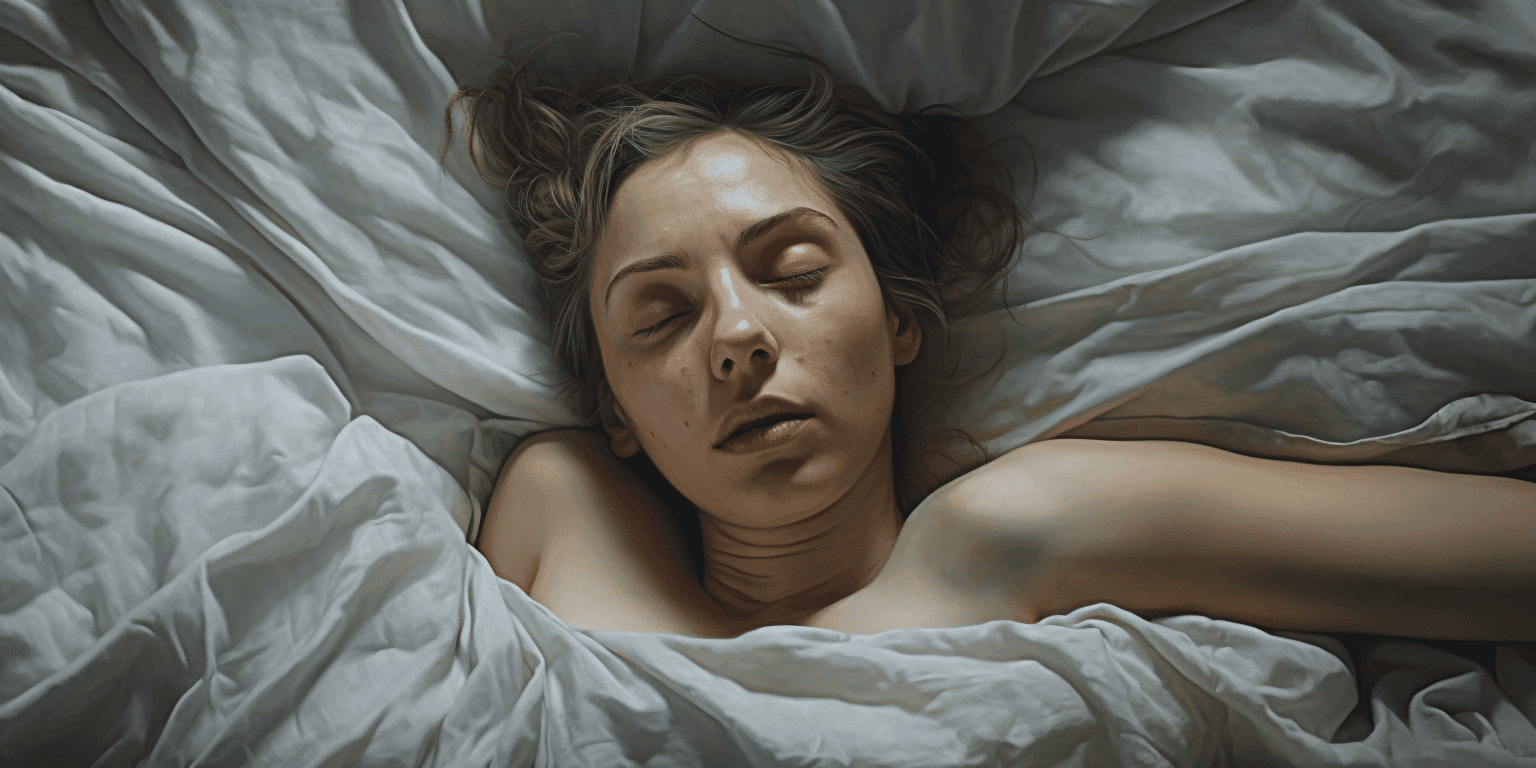
Although sleep research has demonstrated the fundamentality of brain activity in dreaming, the factors that generate our dreams and determine their content are still not well understood.
Nevertheless, various perspectives from psychoanalysis, psychology, and neuroscience have all made credible attempts to explain the causes of our dreams. Some of these explanations are:
- Dreams are simply byproducts of more significant neurological processes that occur within the brain while asleep.
- Dreams are produced by the brain’s efforts to understand difficult and complex information and experiences gathered throughout the day.
- Dreams come from dynamics within the subconscious as coded and symbolic messages for the conscious mind to address.
- Dreams are caused by perceived obstacles and threats in our lives, as the brain prepares for these challenges by dreaming.
While there remains much to uncover on the causes of dreams, we can be sure that neurological, physiological, and psychological factors affect the content, frequency, and quality of our dreams.
Early ideas on the causes of dreams
Before the modern understanding of dreams, societies throughout the world saw dreams as caused by divine or spiritual intervention.
Some of the first psychological explanations for dreaming emerged during the late modern period. In the early 18th century, Scottish royal physician Cullen concluded that dreams were like a state of delirium, ridden with false notions and absurd impressions.
The view of dreams as a delirium-like state would dominate the conventional understanding of dreams among dream theorists until the late 19th century.
However, this changed when Sigmund Freud published his seminal Interpretation of Dreams in 1899.
In his work, Freud proposed that dreams were products of the unconscious, hashing together our residual daytime processes as the mind fulfills unconscious wishes. According to Freud, the ultimate purpose of dreams is to prevent the mind from awakening.
Modern understanding of the causes of dreams

As Freud provided the first understanding of dreams based on scientific (although now widely considered flawed) practices, his psychoanalytic model of dreams dominated conventional psychiatry in the early 20th century.
Carl Jung, a close colleague of Freud, further supplemented the psychoanalytic view of dreams by diverging from Freud’s model. According to Jung, dreams were messages from the unconscious filled with archetypal symbolism. The conscious mind can then decipher these messages for self-realization and improvement.
While psychoanalysis pioneered the early science of dreams, the psychoanalytic understanding of dreams began to lose credibility toward the mid-20th century. More and more detractors questioned the field’s scientific basis as breakthroughs in sleep and dream research came to the fore.
For instance, in 1950, the discovery of REM sleep and its relationship with dreams by Nathaniel Kleinman and Eugene Aserinsky, as well as the first systematic neurological theory of dreams by Allan Hobson and Robert McCarley, marked the end of psychoanalysis’s dominance on modern dream theory.
From then on, the neurological dimension of understanding dreams alongside new technology and research methodologies has built the current state of oneirology, leading to a range of scientific theories on the causes, influences, and functions of dreams.
What influences dreams?

Dreams are sensitive to our mental and physiological state.
Psychological and physiological factors can influence the frequency, quality, recall, duration, and content of our dreams.
Psychological factors include:
- mental condition
- sleeping patterns
- stress
- intense emotional experiences
Physiological factors include:
- age
- substance intake
- medication use
- dietary habits
- physical condition
Psychological Factors
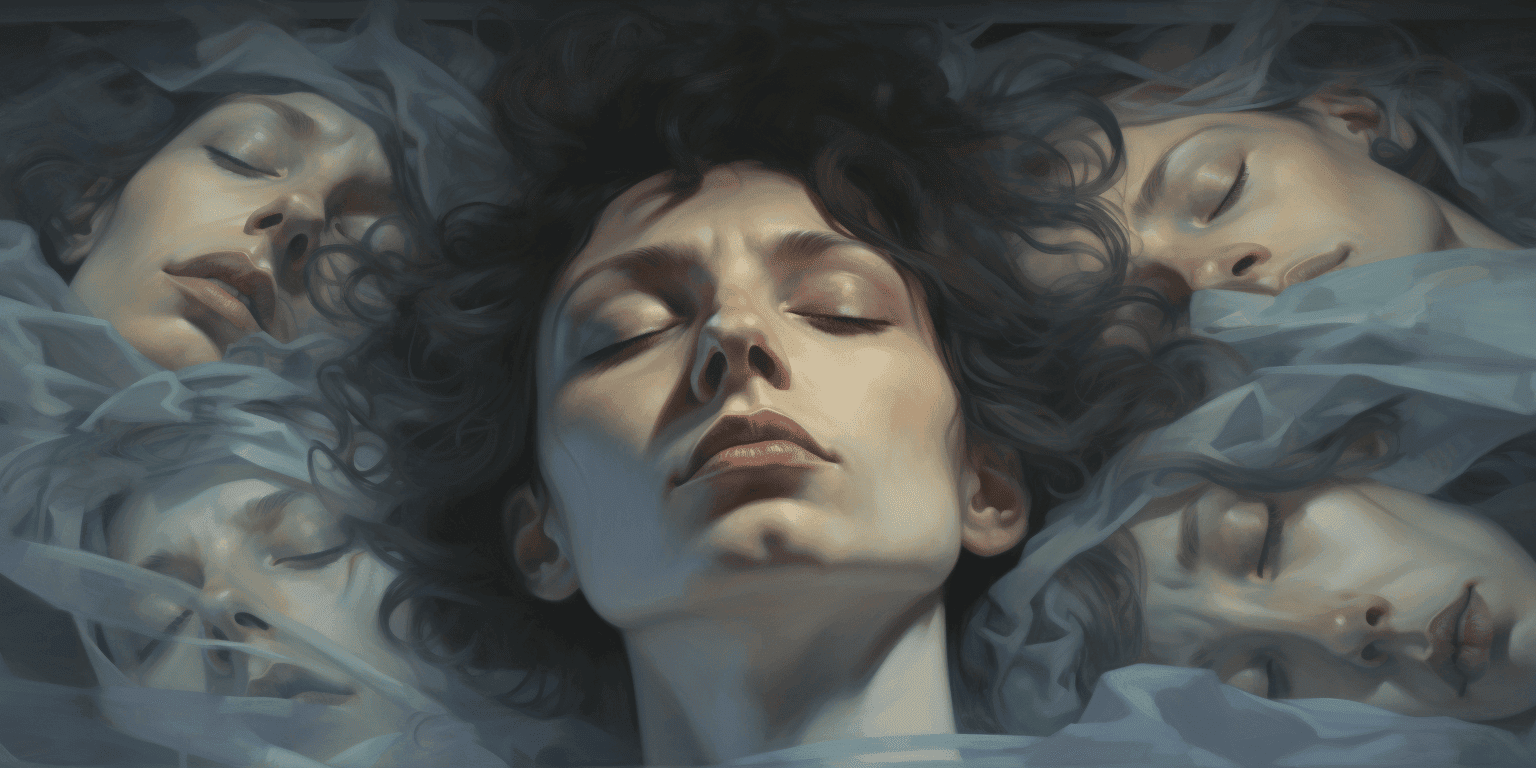
Our dreams are intricately connected to our psychological state of mind.
Research shows that various emotional, mental, and experiential factors can significantly impact the quality, content, and recall of our dreams.
Psychologically, poor sleep habits, high stress levels, traumatic events, grief, and mental health conditions can all influence dreams.
Dreams can be affected by both short-term psychological disturbances, like a stressful day at work, and more chronic mental health issues like depression or PTSD.
Stress
Research shows stress affects dreaming in several ways:
- REM sleep becomes more active and frequent after encountering strong stressors. The anxiety caused by stress can carry over into dreams.
- Intense dreams are more likely during stressful experiences. Our most significant and recent stressors tend to appear in dream content.
- Stress aids dream recall. One study found people under high stress had longer periods of heightened dream recall.
- Dreams help process stressful events by replaying them during sleep, which better prepares the mind to address stressors when awake.
Observed effects of stress on dreams include:
- More frequent and vivid dreams
- Increased negative dream emotions like fear, anxiety, shame
- Dreams focused on recent stressful incidents
- Improved ability to remember dreams
Bereavement
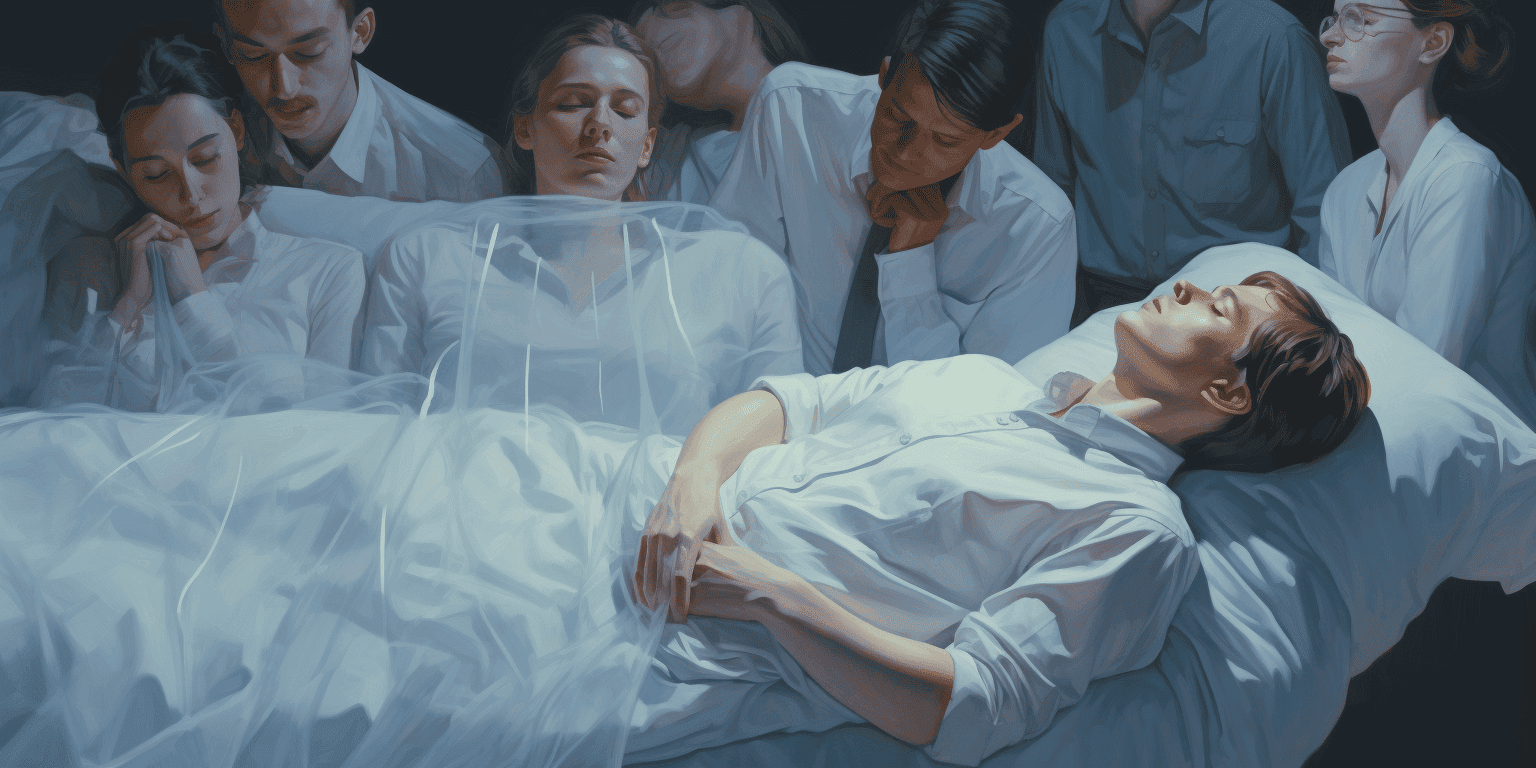
Bereavement, or extended periods of grief, can profoundly influence dreams.
A study observed that persons in bereavement experienced marked differences in the content, quality, and frequency of dreams. Participants of this study found that their dreams helped them accept the passing of their loved ones.
Another study focused on the effect of bereavement on dreams found that grief was closely associated with oppressive dreams. The same study noted that oppressive dreams were strongly associated with depression and anxiety.
Sleep deprivation
Sleep deprivation leads to more dream cycles because of REM rebound – the brain’s way of catching up on lost REM sleep.
Moreover, sleep deprivation diminishes dream recall. In a study analyzing the effects of one night of sleep deprivation, subjects showed a dramatic impairment in their ability to remember their dreams.
Sleep quality
One study discovered interesting differences between 23 subjects with good-quality sleep and 27 subjects with poor-quality sleep. In the study, researchers found that:
- Subjects with good sleep quality experienced more high negative emotionality, but have high positive emotionality while awake.
- Subjects with poor sleep quality experienced consistent levels of emotionality in wakefulness and in dreaming compared to participants with good sleep quality.
Sleep disorders
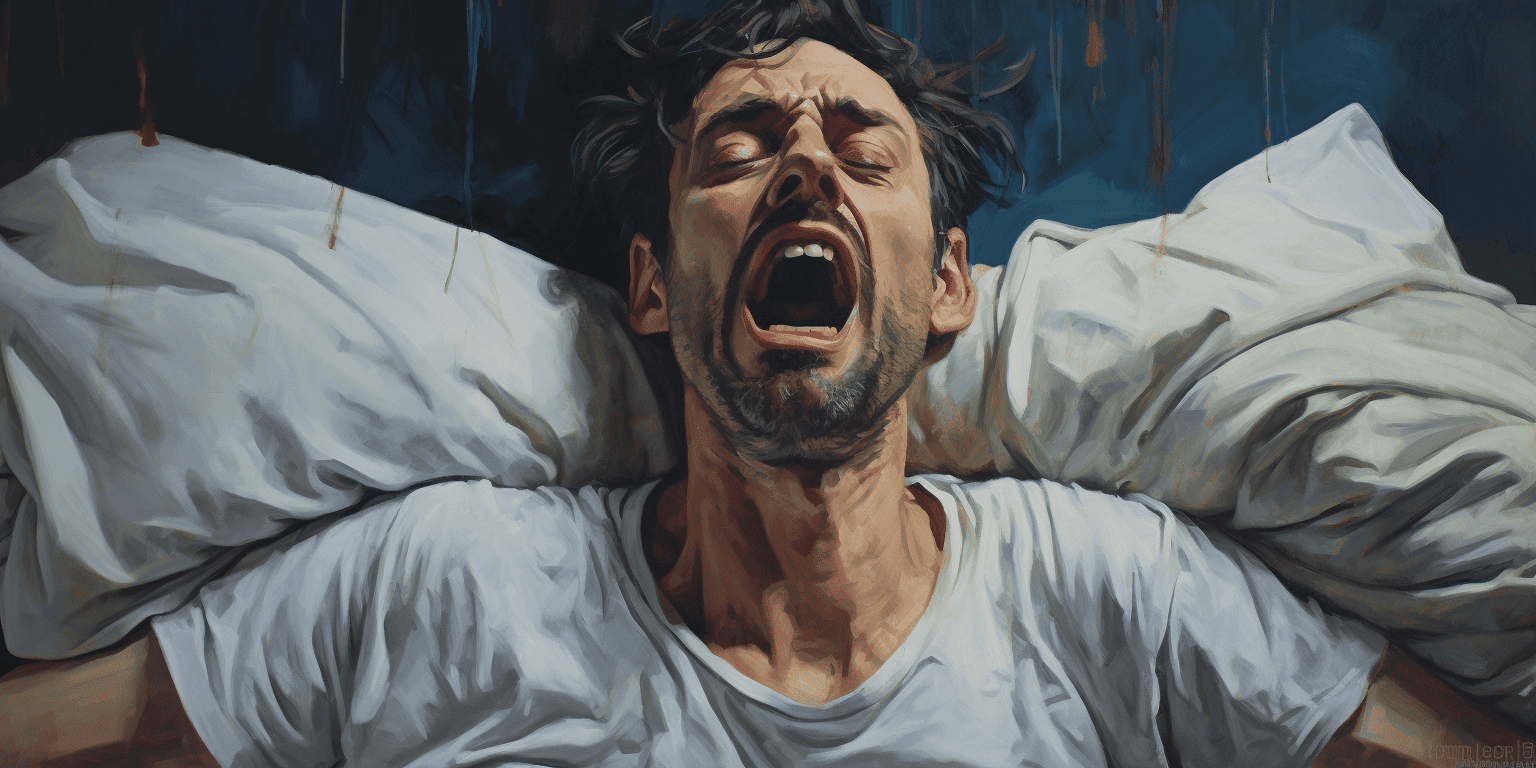
Sleep disorders such as insomnia, narcolepsy, and sleep apnea can significantly impact dreams.
Disruptions to normal sleep patterns have been observed to alter characteristics of dreams including length, content, emotions, and recall frequency.
Insomnia
One study found that persons with insomnia appear to recall their dreams more frequently compared to persons without insomnia.
This has been attributed to their more chronic nocturnal awakenings, subjecting them to more periods of potential dream recall.
Persons with insomnia also report more nightmares compared to persons without insomnia. A related study suggests that nightmare frequency is directly related to insomnia severity.
Narcolepsy
Persons with narcolepsy have been found to have a significantly higher percentage of dream recall compared to persons with normal sleep patterns.
Researchers speculate this to be a potential reason why narcolepsy patients are more likely to mistake dream experiences for true memories.
Narcoleptic persons also tend to have more vivid and more emotional dreams compared to healthy patients. Likewise, a study found that patients with narcolepsy reported more lucid dreams than patients without narcolepsy.
Sleep Apnea
A study on the effects of severe sleep apnea on the dreams of patients found that:
- Violent and highly anxious dreams were only reported by patients with sleep apnea.
- Patients with sleep apnea had increased emotional tone and lasted longer.
- Dream recall between healthy patients and patients with sleep apnea exhibited no significant differences.
- Dream recall decreased in patients with sleep apnea after treatment with CPAP (continuous positive airway pressure) therapy.
Mental disorders
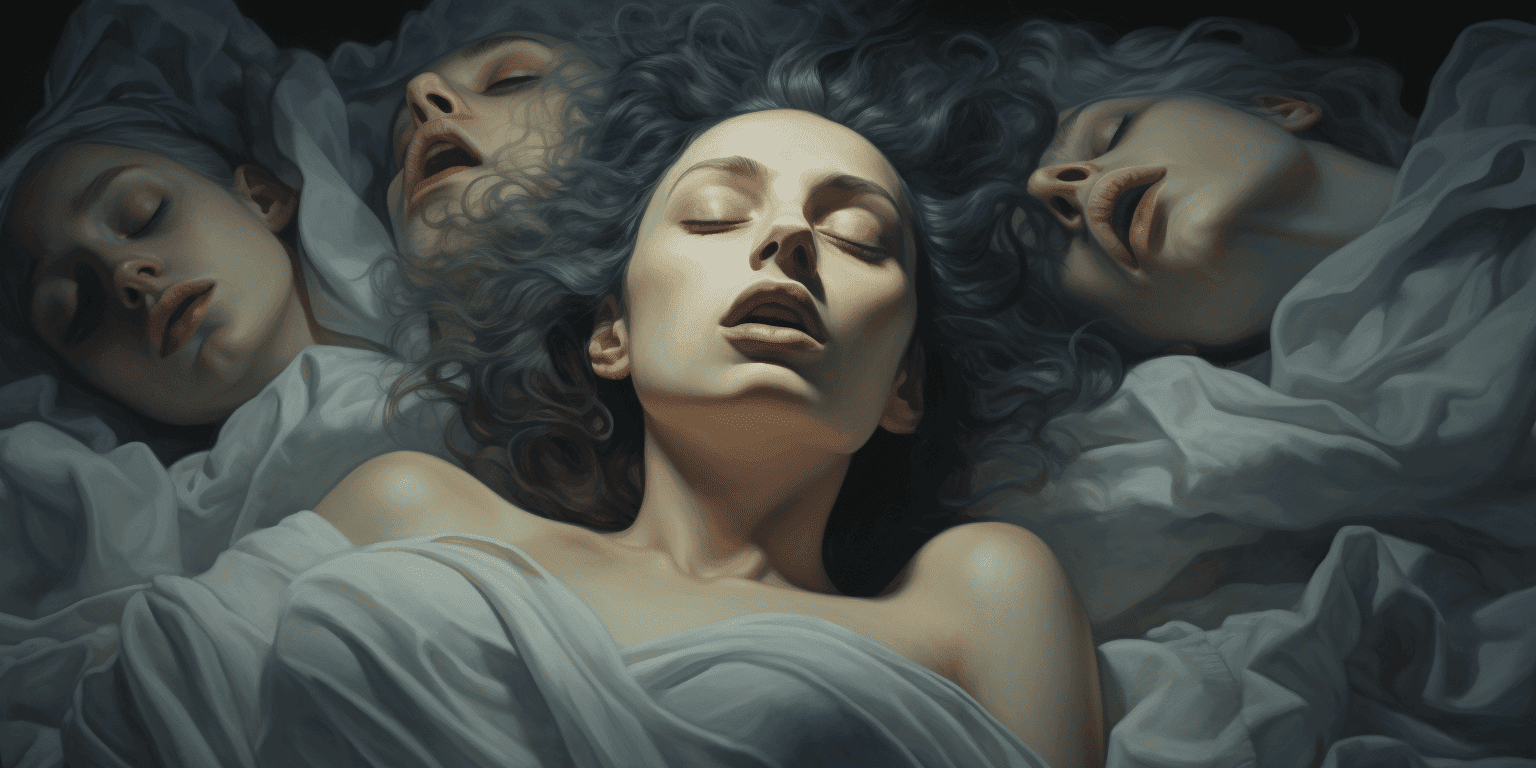
Mental disorders have been found to disrupt normal dream experiences. These include schizophrenia, depression, and post-traumatic stress disorder (PTSD) which have all been observed to affect the recall and content of dreams.
The influence of mental disorders on dreams can often be aggravated by their tendency to affect sleep patterns, such as their consistency, quality, and duration.
Schizophrenia
Studies conducted on patients with schizophrenia have found that:
- Patients with schizophrenia had similar patterns of dream recall to non-schizophrenic patients.
- Schizophrenic patients in one study frequently reported nightmares in their dreams, more so than non-schizophrenic patients.
- A similar study found that patients with a high risk for psychosis had more nightmares compared to healthy patients.
- The dream content of schizophrenics significantly differs from non-schizophrenics. Bizarreness and impossible experiences were found to be more common in the dreams of schizophrenics.
Post-Traumatic Stress Disorder
Post-traumatic stress disorder (PTSD) has a significant impact on dreams. Studies have observed the following effects in PTSD patients:
- In one study, up to 70% of participants experienced posttraumatic nightmares reliving the traumatic event. About half of these nightmares are exact replications of the event rather than symbolic representations.
- Children also suffer posttraumatic nightmares after trauma. A study on children who had survived road traffic accidents found that 34% of children reported nightmares after at least one assessment.
Depression
Depression can change the content and recall of dreams.
A study focused on the dreams of depressive inpatients and outpatients found that depressive inpatients were less likely to remember their dreams in the morning. Depressive outpatients, in contrast, had higher rates of dream recall.
A related study conducted on the dreams of depressive inpatients found that the content of their dreams reflected waking-life symptoms. The study also proposed that there may be a link between the severity of depressive symptoms and the themes of dreams (such as death or dying).
Bipolar depressed patients have also been observed by one study to have dreams involving themes of death and injury before the onset of mania. Another study also reported that dream bizarreness heightens during manic phases.
Eating Disorders
Studies suggest that eating disorders such as bulimia and anorexia have a noticeable influence on the content and theme of dreams.
Food dreams have been reported to be more frequent in the dreams of eating-disordered patients, and an analysis of studies on the dreams of bulimic and anorexic patients found consistent patterns of negatively toned dream content.
For instance, their dreams were observed to often involve distressing scenarios and emotions, such as anxiety closely associated with body image.
Physiological Factors

External stimuli, bodily sensations, age, sexuality, and other physiological factors can affect dreaming, especially if these factors specifically target sleep.
These can range from dietary habits and substance intake to the physical condition of the body and the brain while asleep.
Age
Dream patterns change as we age.
An extensive review of the effects of age on dreams found that dream recall progressively decreases from the beginning of adulthood. The same review observed that dream reports become less intense as dreamers age.
Children are more likely to have dreams with negative themes. A study that analyzed the dreams of 190 schoolchildren found that:
- Anxiety was prevalent among kids aged 4-6 years and 7-9 years.
- For children aged 10-12 years, however, anxiety was significantly less.
Sexuality
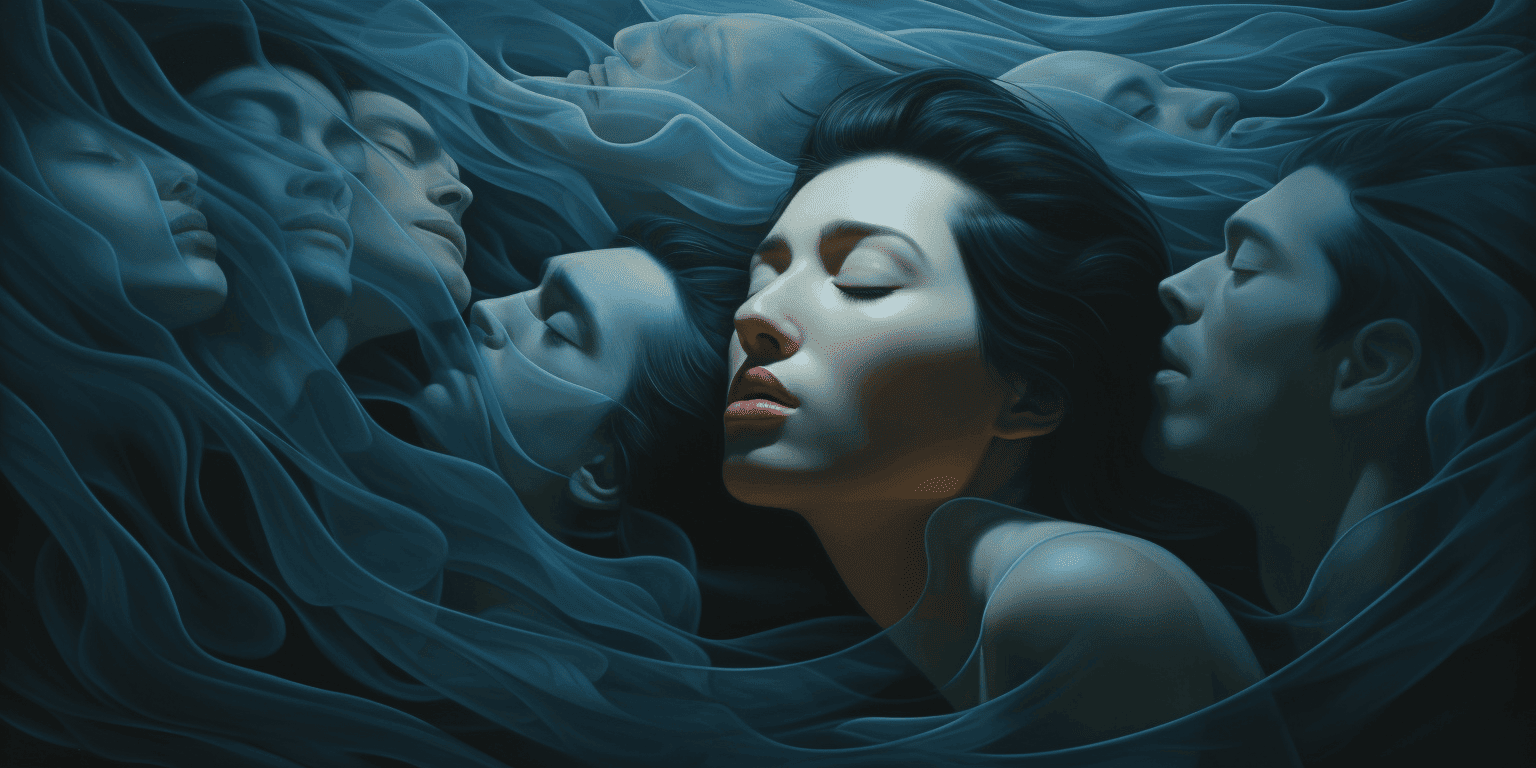
Gender differences in dreams have been extensively studied. Some notable findings include:
- Women recall their dreams more frequently compared to men.
- Women share their dreams more often and are more interested in dreams.
- A comprehensive study on dream content found that men’s dreams exhibit more physical aggression and a higher proportion of male dream characters compared to women. Women’s dreams tend to include clothing, household objects, and more explicit dream emotions.
- Another study, however, found no significant difference between the content of dreams of men and women but found that women had more dreams about their families and children.
- Working women showed similarities with recorded male dream patterns compared to housewives.
Furthermore, more waking-life interactions with the opposite sex have been found to correlate with more dreams including characters of the opposite sex.
This corroborates a study that found that research participants in opposite-sex partnerships were more likely to dream about their partners.
Pregnancy
Pregnancy has a remarkable effect on the content, frequency, and recall of dreams.
A study on the effects of pregnancy on the dreams of 88 women observed special dream patterns:
- Most of the pregnant subjects experienced dreams related to pregnancy, with dreams about pregnancy or the expected baby being reported by 67% of the subjects.
- The frequency of dreams increased with gestational age.
- The subjects most commonly reported conflict with the baby’s father in their dreams.
Sleeping position and physical sensations
Physical sensations while asleep have been found to influence dream experience.
A study investigating the relationship between dreams and sleeping positions surveyed 670 male and female students.
It revealed that students who regularly slept on their stomachs experienced more vivid dreams and sexual dreams.
This was attributed to increased pressure on erogenous areas of the body, as well as the tendency of dream content to respond to physical sensations while asleep.
Diet

Diet has been shown to influence dreams. Research indicates that prolonged periods of hunger and thirst increase the likelihood of dreaming about food.
Moreover, a study analyzing the relationship between food preferences and dream characteristics among 7 men and 42 women found that:
- High intake of organic food correlated with more meaningful dreams, more recurring dreams, and increased dream recall.
- Fast foods, in contrast, correlated with less dream recall, nightmares, and more sexual dreams.
Brain injury
Severe damage to the physical structure of the brain can drastically alter dreams.
Brain lesions have been demonstrated to produce the most effect when located in regions of the forebrain and brainstem.
For example, lesions on parts of the brain responsible for facial recognition completely removed the ability to dream of faces.
Likewise, head injury has been noted to influence dreams. One study on the sleep-awake patterns of subjects who experienced minor head injuries found that they had less frequent and less vivid dreams.
Substances

Substances can significantly modify our mental state, physiological functions, and sleep patterns.
As such, evidence strongly suggests that substances are a major influence on the quality, content, and recall of dreams.
These include various forms of clinical medication and over-the-counter drugs.
Antidepressants
Antidepressants (AD) have been observed to dramatically affect dream recall and content.
A study found that people under the influence of ADs recall their dreams less frequently compared to non-AD users.
Patients taking tricyclic antidepressants had dreams that induced more positive emotions, while patients taking SSRIs (serotonin reuptake inhibitors) had more intense dreams, with some being nightmares.
Dementia medication
Medications used to treat dementia and Alzheimer’s have been observed to affect dreaming. For example:
- Galantamine, a drug that treats Alzheimer’s, appears to increase the likelihood and frequency of lucid dreams. One study revealed that galantamine also enhanced dream recall, intensity, and sensory vividness.
- Donepezil, another Alzheimer’s medication, may influence dreams as well. Research shows evening doses of donepezil correlated with an increase in nightmares.
Insomnia medication
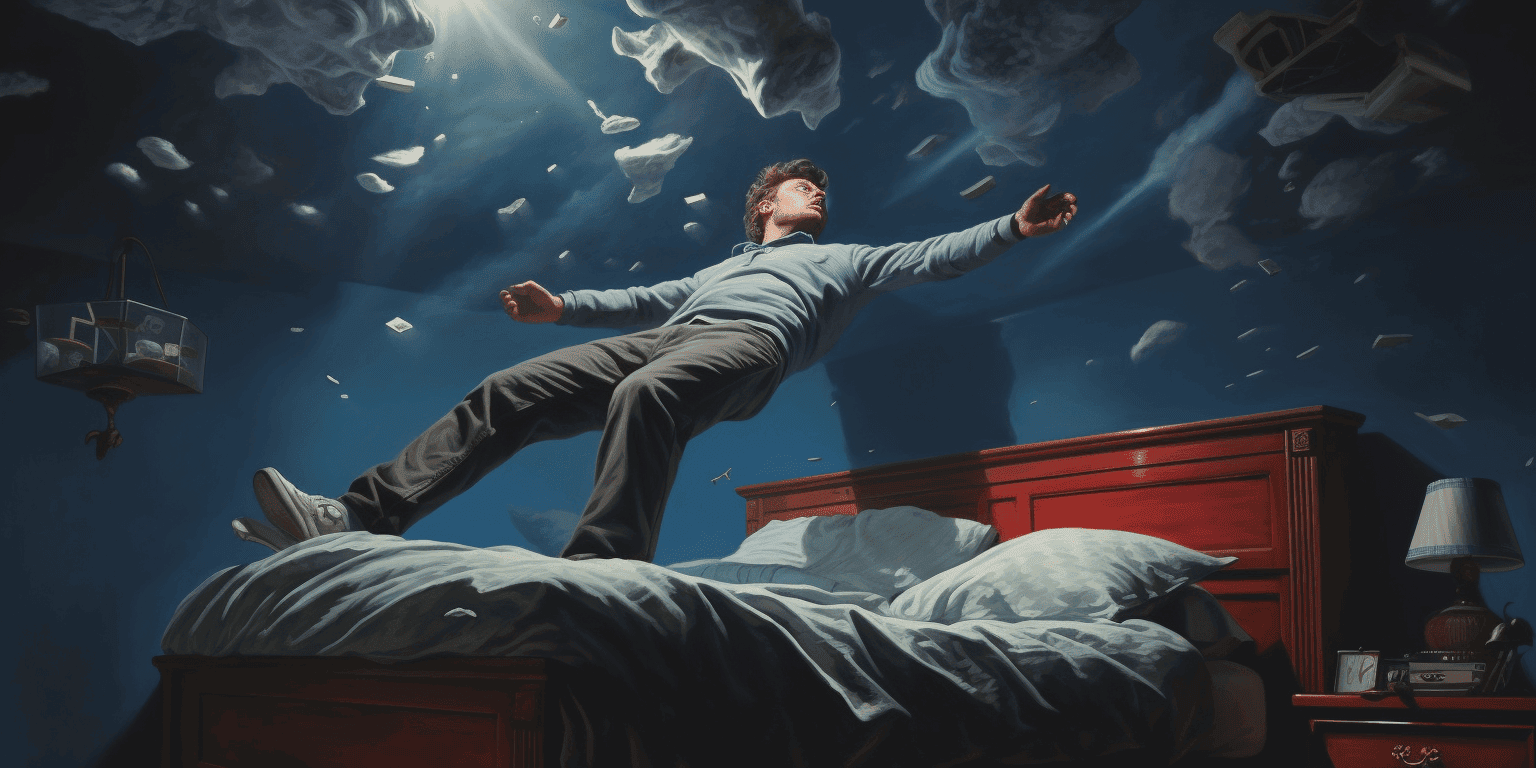
Benzodiazepines, the active ingredient in common insomnia medications like Xanax, can noticeably affect dream content.
A study investigating the effects of flunitrazepam, an insomnia medication commonly known as Rohypnol, on the dreams of eight subjects observed remarkable changes in dream content.
The study compared these changes to placebos and found that subjects under the influence of flunitrazepam had dream content involving:
- More physical aggression
- More verbal aggression
- More sexuality
- More emotional unpleasantness
Alcohol
Excessive alcohol intake can strongly influence dreaming.
A study observed the effects of alcohol on the sleep and dream patterns of 37 patients with alcohol dependency and compared them to healthy patients. Findings include:
- Alcohol decreases subjective sleep and dream quality compared to healthy patients.
- Patients with alcohol dependency more frequently dreamt of alcohol.
- Periods of withdrawal increased the likelihood of dreaming of alcohol.
- Interestingly, none of the abstinent alcohol-dependent patients dreamt of alcohol while in withdrawal.
What are the functions of dreams?
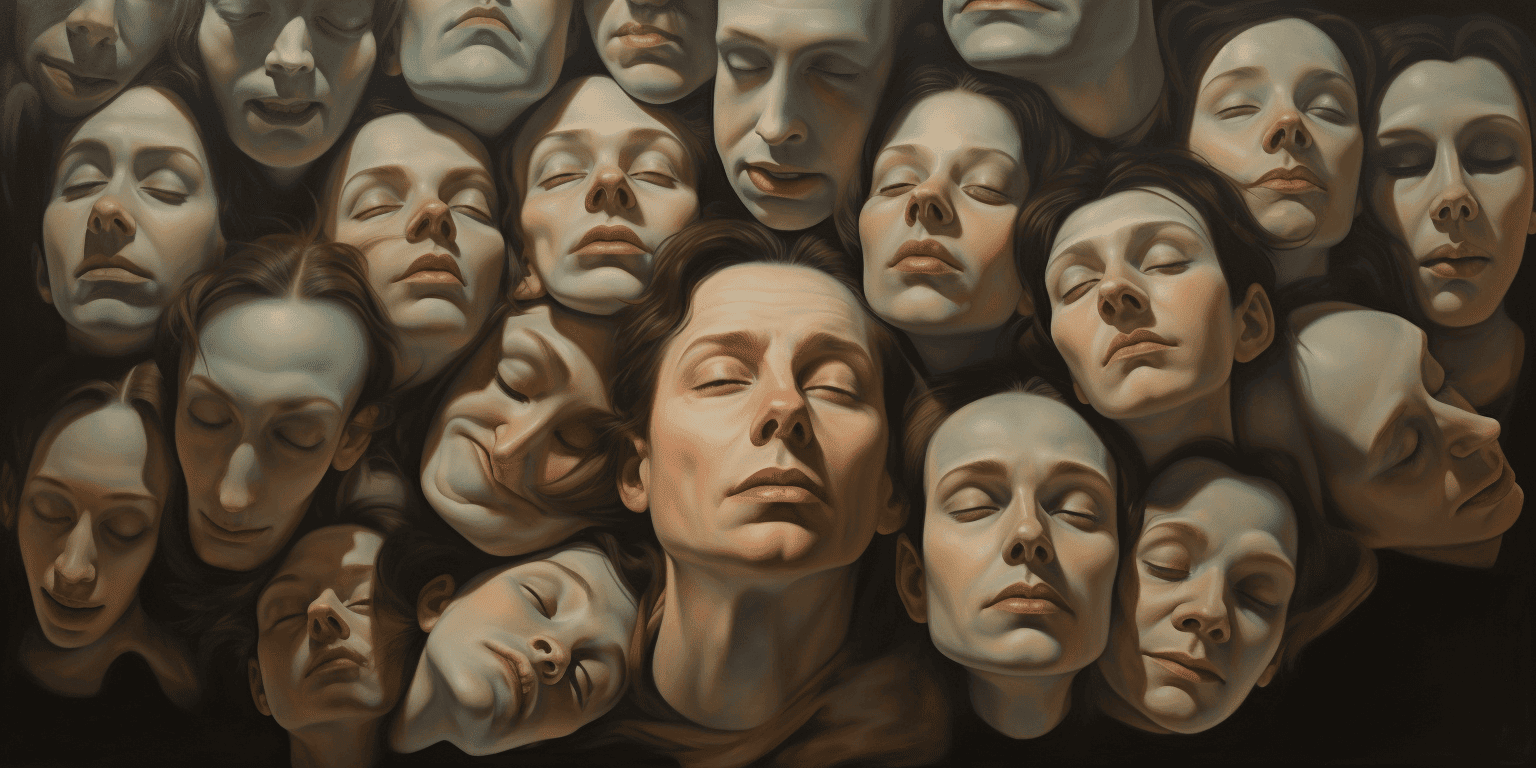
While no unified consensus on the role of dreams exists, theories drawing from the thriving field of dream research offer many plausible explanations.
Most of these theories rely on concrete evidence gathered from sleep laboratories and modern research methodologies.
These theories propose that dreams may:
- improve learning and memory
- help emotional healing
- inspire creativity
- simulate potential threats
- prepare the mind for social interactions
- continually engage the brain
Almost all theories agree that dreams bring some positive benefit to the brain and that answers to the role of dreams can be found in the complex interplay of neurological processes while asleep.
Dreams improve learning
Studies have shown that dreams play an important role in boosting memory consolidation and learning.
One study tracked the dream patterns of 22 participants after being asked to take a series of word-picture association tests.
Researchers in the study found that the incorporation of the task in dream content positively correlated with task performance.
Another study tracked 39 participants’ dreams after they played a virtual maze game. Those who dreamed about the maze showed significant improvement in their task performance the next morning. Their dreams appeared to reinforce the learning skills required to successfully navigate the maze.
Dreams help emotional healing

While awake, strong negative emotions can be overwhelming. However, in dreams, the brain is more capable of constructively processing these feelings.
In fact, the lack of REM sleep, where dreams most frequently occur, has been found to impair adaptation to these emotions.
Dreams may diffuse negative emotions like fear, stress, and anxiety by repeatedly exposing the dreamer to these feelings in a controlled way.
With each replay, the emotions begin to lose their intensity, leading to improved psychological healing.
This explains why recurring dreams are common after significant life events, as the brain is likely reworking through the event to reduce associated emotional turmoil.
Dreams inspire creativity
Dreams have been known to be sources of creative inspiration. Examples include:
- Mary Shelley’s horror classic Frankenstein.
- Salvador Dali’s paintings.
- Paul McCartney’s song Yesterday.
- August Kekulé’s discovery of the benzene molecule.
A study proposes that, on a neurological level, dreams allow the mind to make connections it would not normally make in waking life.
Parts of the brain that control logic, reasoning, and restraint are less active. This frees the mind to combine disparate ideas, images, and concepts in novel ways.
With lower inhibitions, dreams can make unusual associations that the conscious mind would normally censor or dismiss.
This interplay is thought to spark creativity and lead to generating innovative ideas or solving vexing problems.
Dreams simulate threats
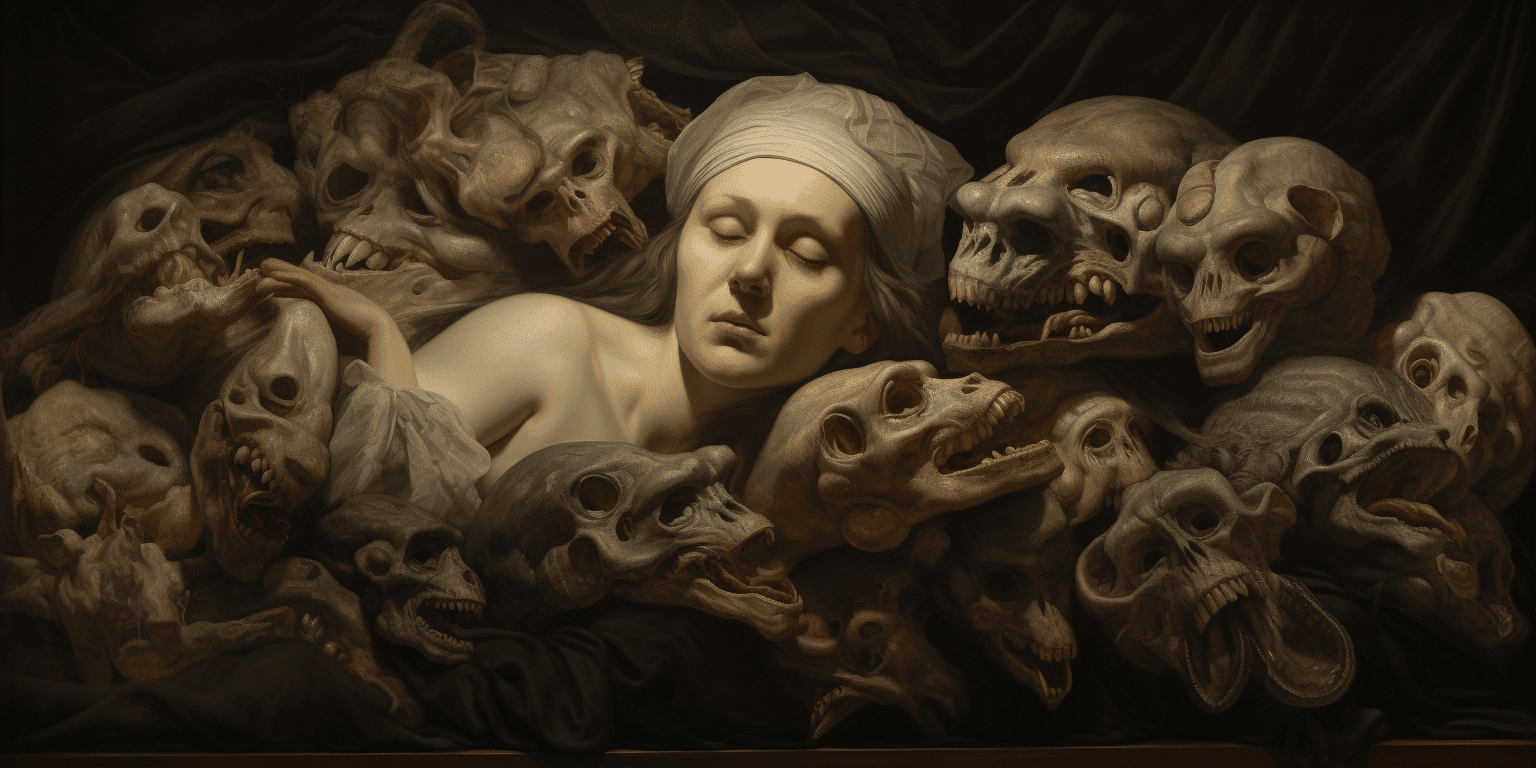
The threat simulation theory proposes that dreams simulate frightening scenarios to help prepare the dreamer for potential threats in the real world.
Studies have shown that dreams will often reflect how someone is actively or subconsciously coping with difficulties in their life. According to proponents of this theory, this is why stressful and disturbing dreams are more frequent than positive dreams.
Threat simulation also offers explanations for nightmares – they force the dreamer to confront a threat and cope with fear to build up emotional resilience to real-life stresses.
Dreams prepare us for social interactions
The social simulation theory suggests that dreams may function as practice for social interactions by simulating scenarios we encounter when awake.
Studies show our dreams often feature social dynamics like aggressive confrontations, awkward scenarios, and anxiety-inducing interactions.
By allowing us to simulate social situations at night, dreams provide a way to work through fears and build communication skills.
Dreams thereby prepare us for social life by rehearsing both positive interactions and unpleasant encounters that we may want to avoid.
Dreams keep the brain working
According to the continual-activation theory, dreams engage various areas of the brain while we sleep to essentially regulate cognitive functions.
Dreaming recruits parts of the brain stem, thalamus, amygdala, and hippocampus – regions involved in thinking, memory, emotion, and perception. Brain scans show brain activity during REM sleep is comparable to wakeful consciousness.
By providing brain stimulation, dreaming maintains neural pathways and strengthens cognitive functioning.
What do people dream about?
Dream content encompasses a vast range of themes and elements limited only by the human imagination. These include:
- settings
- characters
- objects
- emotions
- sensations
- thoughts
- scenarios both bizarre and realistic
However, certain themes and elements are reported more commonly across the general population than others.
By analyzing dream reports, researchers have uncovered insights into the most prevalent dream topics and characteristics.
This has allowed psychologists to better understand the potential purpose and meaning behind dreams.
Common Dreams
Some dream experiences are more common than others.
In a study profiling the emotions of over 200 dream reports, researchers found that negative emotions have been found to occur in dreams more frequently than positive emotions. These include fear, stress, guilt, and anxiety.
Another study surveyed the dream content of 444 participants, and found that 55 themes were reported by at least one participant:
- school, teachers, and studying
- being chased or pursued
- sexual experiences
- falling
- arriving too late
- a living person being dead
- a person now dead being alive
- flying or soaring through the air
- failing an examination
- being on the verge of falling
- being frozen with fright
- being physically attacked
- being nude
- eating delicious food
- swimming
- being locked up
- insects or spiders
- being killed
- losing teeth
- being tied up, restrained, or unable to move
- being inappropriately dressed
- being a child again
- trying to complete a task successfully
- being unable to find a toilet
- discovering a new room at home
- having superior knowledge or mental ability
- losing control of a vehicle
- fire
- wild, violent beasts
- seeing a face very close to you
- snakes
- having magical powers
- vividly sensing, but not necessarily seeing or hearing, a presence in the room
- finding money
- floods or tidal waves
- killing someone
- seeing yourself as dead
- being half-awake and paralyzed in bed
- people behaving in a menacing way
- seeing yourself in a mirror
- being a member of the opposite sex
- being smothered, unable to breathe
- encountering God in some form
- seeing a flying object crash
- earthquakes
- seeing an angel
- part animal, part human creatures
- tornadoes or strong winds
- being at the movie
- seeing extra-terrestrials
- traveling to another planet
- being an animal
- seeing a UFO
- someone having an abortion
- being an object
Characters in Dreams
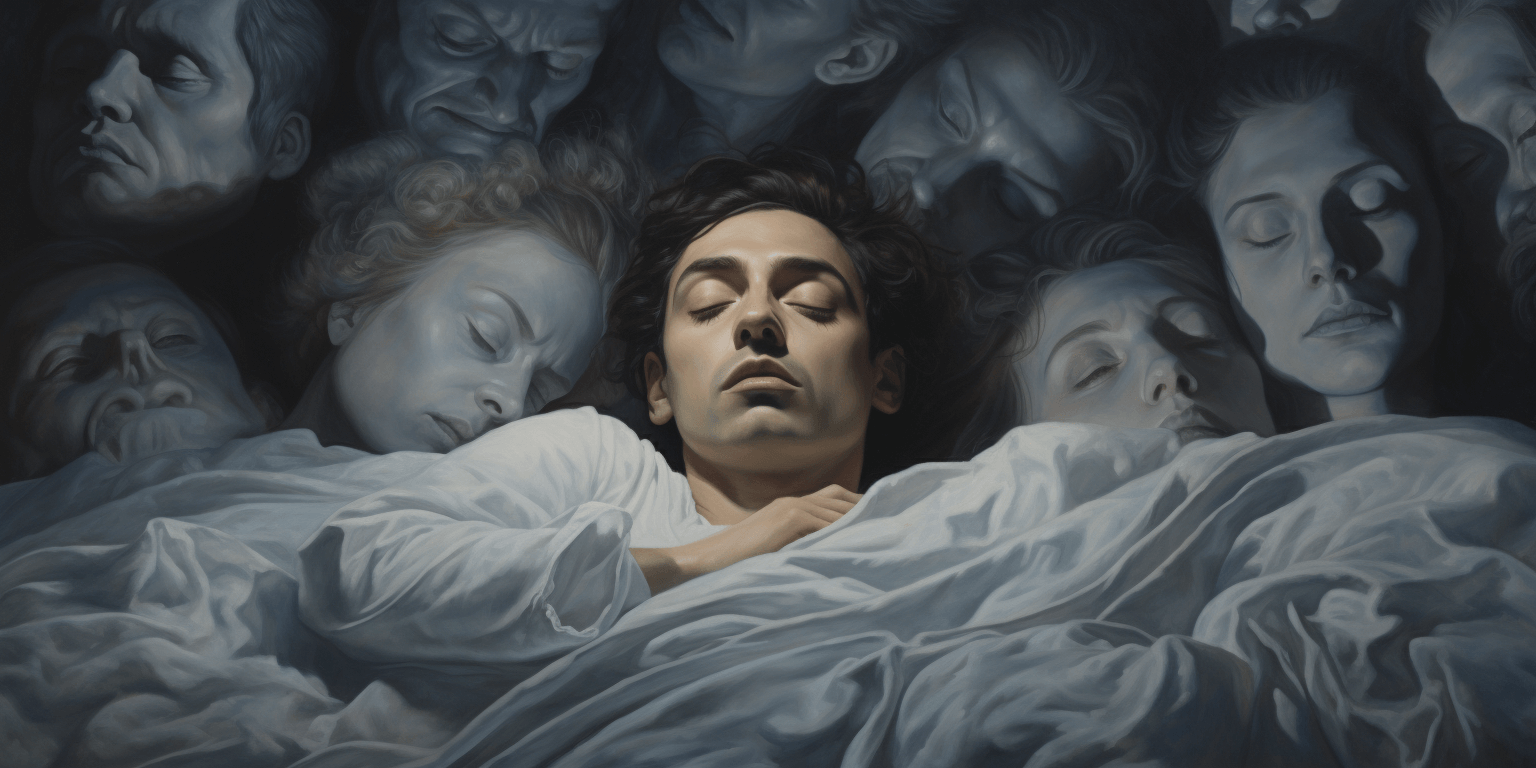
Dreams often involve a variety of characters. These can be people, animals, or even talking objects that dreamers can identify.
Characters in dreams are almost always associated with strong emotions. One study analyzed 320 dream reports of 35 subjects and found that joy and affection were the most common emotions associated with dream characters.
Dream characters tend to be people that dreamers know. A study examined the characters that 33 adults recognize in their dreams and found that:
- Forty-eight percent of the characters were named personages known to the dreamer, 35% were identified according to a social role (e.g. a teacher), and 16% were novel or unknown.
- Forty-four percent of characters were recognized by ‘just knowing’, 45% by face, 32% by appearance, and 21% by behavior
Recurrent Dreams
Recurring dreams are dreams that repeat with similar content, settings, and imagery multiple times over months or years.
A study found that, out of 676 participants, up to 50 to 75% of adults report frequent recurrent dreams. Some of the most common recurrent dreams involve:
- being chased
- positive social interactions
- sexual experiences
- being paralyzed
Recurring dream themes can also be influenced by age and gender.
Age
A study assessed the differences between recent recurrent dreams and childhood recurrent dreams reported by 91 university students.
It found significant differences between recent recurrent dreams and recurrent dreams reported from childhood. For instance, recurrent dreams in childhood involved more distressing situations such as being pursued or menaced by dream characters like monsters or witches.
Gender
A study investigating the recurrent dreams of 120 male subjects and 76 female subjects found differences according to gender experiences, such as women dreaming of hairdressing.
Another study analyzed the recurrent dreams from 102 dream reports of young adolescents aged 11-15 years. It found that the recurrent dreams of boys involved more aggressive interactions, while girls had friendly interactions.
Nightmares
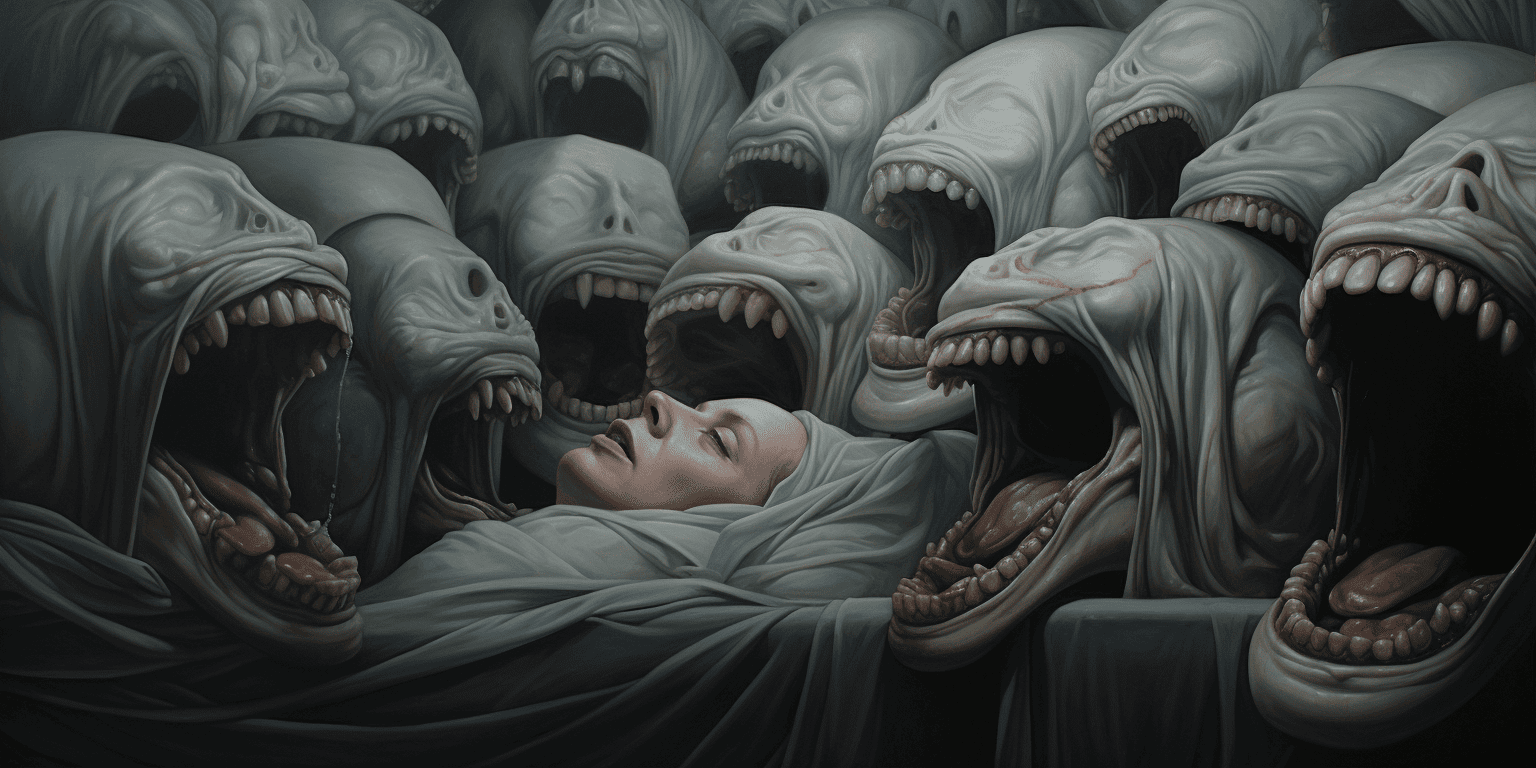
Nightmares are deeply unsettling, frightening dreams that jolt us awake.
Their prevalence varies, around 50% of adults report occasional nightmares. Nightmares most often involve:
- physical aggression
- interpersonal conflicts
- failure
- calamity
Evidence also suggests that nightmares are strong indicators of psychological distress and unresolved real-life stressors. A study investigating the relationship between nightmares and the dreams of 392 nurses found that:
- Days with greater stress were associated with higher odds of experiencing a nightmare, as well as nightmare severity.
- Nightmare occurrence was associated with greater next-day stress severity.
Lucid Dreams

Lucid dreaming involves clear awareness that one is dreaming during the dream state and the ability to direct and modify the dream.
A meta-analysis of lucid dream research over 50 years estimates that 55% of people have had a lucid dream at least once. It also revealed that:
- Lucid dreams are rare in frequency for most individuals, although some people report very frequent lucid dreams.
- Children and adolescents report more lucid dreams compared to other age groups.
- Lucid dreaming doesn’t always entail the ability to control a dream. One related study found that only 23% of 694 students interviewed experienced control of their dreams.
Lucid dreaming shares similarities with waking consciousness. Apart from self-awareness, a study found that the brain while lucid dreaming exhibits activity similar to being awake.
Lucid dream induction
Lucid dream induction, or the conscious triggering of lucid dreams, is possible through specific techniques and stimulation.
A meta-analysis of 19 studies on lucid dream induction techniques concluded that the effectiveness of induction varies according to technique.
The same analysis found that, compared to seven other techniques, the mnemonic induction of lucid dreams (MILD) technique was the most effective. This involves mental rehearsals that affirm lucid dreaming after waking from a dreamy sleep.
Applications of Deliberate Induction
Deliberate induction has been used for creative and therapeutic applications. Notable examples include:
- People trained with lucid dream induction in one study were able to practice a motor task in a lucid dream. After dreaming, they demonstrated significant improvement in task performance.
- As music remains vivid in lucid dreams, a study interviewing the lucid dream experiences of musicians found that lucid dreams aided in creative inspiration.
- Lucid dreams have been used by various artists as settings to inspire and practice their work.



